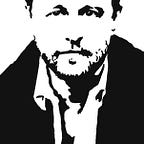The Hero’s Journey In Comic Books
As an infant, Superman was placed in a rocket ship and blasted away from the dying planet Krypton toward earth
Only to be found and adopted by an elderly, human couple, the Kents.
As an infant, Moses was placed in a wicker basket and floated down the river Nile away from a life of slavery.
Only to be found and adopted by Egyptian royalty.
Superman walked among mere mortals in the guise of Clark Kent — A human reporter.
In the apocryphal book of Tobit, the archangel Raphael walked among mortals disguised as a human being.
Superman watched over Earth with his fellow superheroes from a headquarters in the skies.
Zeus observed the human world along with his fellow Gods and Goddesses from atop Mt. Olympus.
Kryptonite was the only substance that could kill Superman.
Mistletoe was the only substance that could Kill Baldur, the Norse God of light.
Superman was killed by his enemies but brought back to life.
The Egyptian God Osiris was killed by his evil brother Set but later brought back to life,
The story of Superman and other comic book superheroes bear more than a passing resemblance to ancient myths.
A mistake would be to assume their major similarity is that they’re both fanciful stories and made-up fairy tales.
Myths were, to paraphrase John Vervaeke, perennial stories about problems that plague mankind.
Mythologist Joseph Campbell said every myth is psychologically symbolic.
So, to the extent that comic books behave like myths, they’re actually stories about the human condition and the problems we all face.
Campbell was famous for coining the term, “the hero’s journey” to describe a pattern he, and others, noticed recurring in many myths and legends. The Hero’s Journey has 16 or 17 individual stages, depending on how you interpret it. But, at its heart, can be told in 3 steps.
Departure — A potential hero leaves the safety of the world they know.
Initiation — The potential hero faces a series of trials and tribulations to win a boon.
The Return — The Hero returns with their new treasure to shares it with the world.
The Hero’s Journey describes the process of how we, as humans, make our world better. It is the story of every invention, discovery, cure, epiphany, or good idea.
You can see the Hero’s Journey, not just in ancient myths but in modern media — it seems to make its way into the stories we tell — as if it’s a part of our storytelling DNA.
As a result, if you include a piece of the Hero’s Journey, in your story, like George Lucas did, with Star Wars, your story becomes more resonant — on an almost invisible, subconscious level. We respond to the Hero’s Journey without even realizing it.
This is true if you’re writing a novel, a screenplay, or a comic book.
I currently find myself obsessed with going through my old comic books and noticing where the Hero’s Journey appears.
If you write comic books (or any stories) I think it’s possible to learn from these examples and apply them to your own work.
If you simply enjoy reading comics, you’ll gain even more insight into why you love the stories you love.
So, if either of these things describes you — or neither does… welcome.
Patch Drury is an award-winning writer, published cartoonist, and Joseph Campbell enthusiast. A video version of this essay can be found here: https://www.youtube.com/watch?v=SeqKbvuC5GQ
